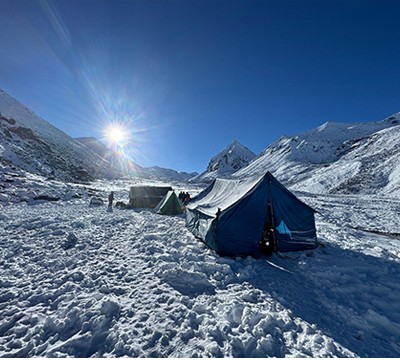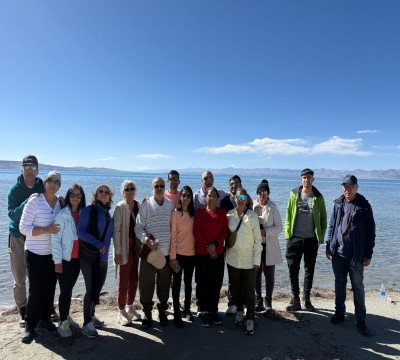Planning a trek in Nepal requires careful preparation, and knowing what trekking equipment to bring can make or break your adventure. From the Everest Base Camp trek to the Annapurna Circuit, packing the right gear ensures safety, comfort, and an unforgettable experience. Essential trekking equipment includes high-quality trekking boots, layered clothing for varying altitudes, sleeping bags, trekking poles, and a reliable backpack. Don’t forget accessories like water bottles, headlamps, sunscreen, and first aid kits. For Himalayan treks, lightweight yet durable gear is crucial due to long walking days and changing weather. Whether you’re planning a short trek in the Annapurna region or a challenging high-altitude expedition, this comprehensive Nepal trekking packing list covers everything you need for a successful journey. Himalayan Asia Treks provides expert guidance on trekking gear, ensuring you are fully prepared for Nepal’s diverse trekking routes.
Essential Trekking Equipment in Nepal | Himalayan Asia Treks Guide
Table of Contents
Trekking Equipment information in Nepal Trekking
When embarking on a trek in Nepal, proper equipment is essential for a safe and enjoyable journey. Himalayan Asia Treks advises packing strategically, including sturdy hiking boots with ankle support for rugged terrain, breathable clothing layers to adapt to changing temperatures, and a waterproof jacket to shield against rain or snow. Other essentials include a comfortable backpack, a warm sleeping bag suitable for high altitudes, and a reliable headlamp or flashlight for navigating trails in low light. Additionally, it's crucial to bring along essentials like sunscreen, sunglasses, a first aid kit, and water purification tablets to ensure hydration and safety throughout the trek. With the right gear and preparation, trekkers can fully immerse themselves in Nepal's breathtaking landscapes and cultural experiences.
The equipment you carry with you for trekking in Nepal will be influenced by trekking, at what time of year, and modes of trekking, like teahouse or camping trekking. If you are planning trekking in Nepal, your local Trekking Agency in Nepal will arrange for all of your group's equipment, so you need only personal equipment. The main emphasis regarding equipment should be keeping you warm and dry while still being reasonably lightweight and compact. We suggest a wide range of fleece jackets and pants that will be adequate for lower or easy trekking packages. In contrast, higher or moderate trekking needs a down jacket, waterproof and windproof jacket and pants are essential as are comfortable, well broken-in footwear. For easy trekking or lower trekking altitudes, lightweight boots or shoes will be adequate, but higher altitude, where snow is likely sturdier footwear, is a wise choice.
Head covering is one of the most important things when traveling to mountain region trekking. Peaked caps for sunny days and fleece or wool caps for when it gets cold are the best combination. Other essential items to have with you include good sunglasses that give 100% protection against ultraviolet rays, a drinking water bottle. Need spare clothing, both warm and light, a torch with spare bulb and batteries, sunblock cream, toiletries, and a personal first aid kit.
As Himalayan Asia Treks - local trekking in Nepal's Trip Planner suggest, then use the services of a porter. You need to pack most of this gear in a duffle bag or similar and carry essential daily needs in a small rucksack. Whether to hire or buy equipment depends entirely on the likelihood of being used more than just one time. High-cost specialized items such as plastic climbing boots and other hardware are better hired if the intention is only to use them is one time. We suggest, if you come from a warm climate country then hire down jackets, sleeping bags.
Checklist for Nepal Himalaya Trekking
- Day pack for carrying your personal things like Money, Camera, water and snacks etc.
- Waterproof pack cover or dry bags
- Sun screen, Throat lozenges, lip balm
- Hand sanitizer
- Toiletries (toothbrush, toothpaste, deodorant, soap, floss, etc.)
- Face/body wipes
- Camera & batteries
- Power adapter & chargers your electronic device like Mobile, camera
- Bathing Towel
- First -Aid Kit Items
- Sunglasses with UV protection
- Footwear
- Weatherproof walking boots or shoes
- Inside footwear (flip flops)
- Multiple pairs of warm socks
- Warm base layer underwear top and bottoms (woolen or synthetic)
- Light breathable hiking trousers
- 2/3 t-shirts
- Warm mid layer top (woolen or synthetic)
- Down jacket
- Waterproof jacket
- Comfortable warm clothing for at night
- Warm wool hat to cover your ears
- Warm gloves
- Sun hat
- Sunglasses with UV protection
- Headlamp
- Neck warmer
- A pair light weight warm gloves.
- T-shirts 2- 3 pieces quick drying one would be the good.
- Light weight thermal tops.
- Fleece jacket.
- Wind-Stopper jacket (optional).
- A pair’s nylon hiking shorts quick drying one
- Underwear
- Two pairs lightweight long underwear.
- Two pairs trekking pants, preferably that zip on/off at the knees so they double as shorts
- Four pairs of liner warm socks
- Medium weight water proof hiking/trekking boots.
- A pair light trekking shoes for camp/lodges
- Sandal (Optional)
- Passport and extra passport photos (4 copies)
- Durable wallet / pouch for travel documents, money and passport.
- Sun’s cream with SPF 40 is recommended
- Pocket knife.
- Water purification tablets
- Drinking Water Bottle or floatable bottle
- Toiletry kit and be sure to include toilet paper stored in a plastic bag, hand wipes, and liquid hand sanitizer, towel, soap, etc.
- Extra Strength Excedrin for altitude related headaches.
- Ibuprofen for general aches and pains.
- Anti-infection ointments
- Band-aids
- Lip balm (At least SPF 20)
- Detol, Betadin
- Tape
- Immodium or Pepto bismol capsules for upset stomach or diarrhea.
- Diamox 125 or 250mg tablets for altitude sickness.
- 1 small personal sized first-aid kit with blister treatments such as mole skin, band-aids, some waterproof tape, anti-infection ointments, etc.
- Recommended Equipment
- Walking or hiking pole(s).
- Light-weight windproof jacket.
- Neck warmer.
- Sleeping bag liner.
- Wet wipes
- Length of string or para-cord. (12 feet)
- Half a dozen clothes pegs.
- Safety pins. (For attaching wet washing to rucksack to dry while trekking)
- Plastic bags; shop carrier bags. These come in handy for a myriad of uses.
- Shorts.
- Camera. (Can recharge batteries for a small cost in lodges)
- Binoculars.
- Book/games/cards etc.
- Travel diary.
- Lightweight hiking backpack. Check out these best hiking backpacks under $100.
- Hand cleansing gel.
- After-sun/moisturizer.
Tag:
- Tips of Prevent High Altitude Sickness in Trekking in Nepal
- Trekking Equipment information in Nepal
- Nepal Trekking Packages
- Everest Base Camp Trek Information
- Training Tips in Trekking in Nepal
- Everest Base Camp Gokyo Lake Trek
- Everest Trekking Packages
- Everest Base Camp Trek
- Annapurna Trekking Packages
- Trekking in Nepal


